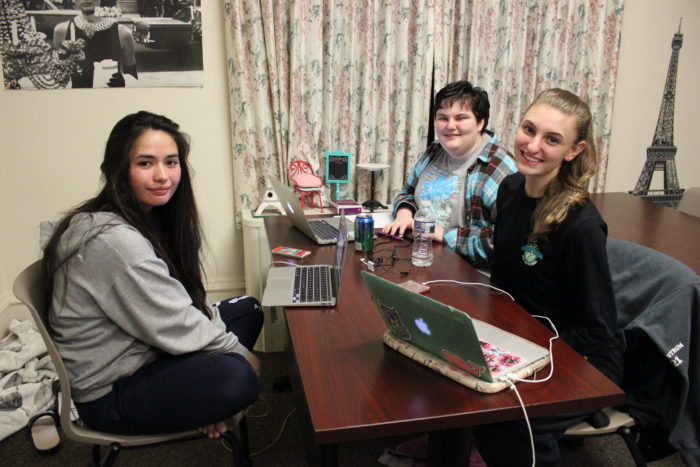Tetris has turned 30, and I have turned 45. Forty-five! I can still remember when I was 10 years old, walking through the airport on a layover in Hawaii on my way to the U.S. from South Korea, backpack full of manhwa. Just as clearly, I remember the first time I saw the blocky shapes of Pong come alive after hooking up an Atari 2600 and turning the TV channel to 3.
Video games are a part of my life, my DNA. For many people a song will trigger a memory and take them back in time, while video games will do the same for me. Now don’t get me wrong, I love music. Growing up in the ’80s and ’90s I will happily admit that I got the beat with The Go-Go’s and I loved rock-and-roll with Joan Jett and the Blackhearts.
But unlike the previous generation, video games are an index to my past just as much as songs are.
This is true not just for myself, but for many of us who were born after 1965, the so-called Generation X and beyond, because we grew up playing video games.
I remember the first time I hooked up an Atari 2600 and saw the blocky shapes of Pong flicker to life. The fact that I could play a video game on my TV thoroughly blew my mind. I remember playing Gauntlet with my high school friends during late nights at a local bowling alley, excited and anxious at the prospect of going to college the next year, while constantly arguing who gets to play the Valkyrie. I remember marathon sessions of Tetris at home and Netrek on campus as an undergraduate at Berkeley. I remember blasting my friends in Quake and Unreal as a graduate student between running experiments and writing my thesis.
But of all these games, Tetris had a hold on me like no other. It would later have such a profound effect on my work.
I played Tetris obsessively on my Mac SE/30 back when I was an undergraduate at Berkeley, and after one 20-hour marathon session of playing Tetris, I went to visit a friend in San Francisco. As I was driving across the Bay Bridge, the orange light of the setting sun was reflecting on the windows of the skyscrapers of San Francisco skyline. In my mind’s eye, perhaps because of the trick of the lights or perhaps because the 20-hour session has left a permanent burn-in of tetrominoes in my retina like an old computer screen, I saw Tetris pieces rotating and falling in the facades of those skyscrapers.
Although I wasn’t aware of the phrase Tetris effect, I guess my experience is a familiar one to many.
This would be as far as the story would go for many people. But for me it was just the beginning. Flash forward 18 years to 2008, I am a professor at Drexel, where I co-founded the game design program and teach video games. I was driving on I-76 when I passed by the recently built Cira Centre building. The Cira Centre is unusual for a skyscraper in that it has rows of LED lights built into the facades of the building. These lights are used mostly for simple light shows — think lights changing from red to green to blue — or to display pixelated logos for events. But as I saw the twinkling lights of the Cira Centre, in my mind’s eye I saw Tetris shapes forming and rotating.
I wasn’t playing Tetris at the time, which was strange. I haven’t played Tetris for a while to be honest. I’m not sure what triggered that visual illusion, but it did take me back to my times in college. Awkward times to be sure, not a child but not quite yet an adult.
But unlike before in college, when I simply shook it off as having played too much Tetris, this time I had the wherewithal to actually think about making it happen. That is, actually making a video game with those lights on a skyscraper.
Although it took five years, it finally happened. In 2013, we made a playable version of the video game Pong for Philly Tech Week 2013 using the LED lights on the north facade of the Cira Centre building. This feat was recognized by Guinness World Records as a World Record.
Yes, it wasn’t Tetris, but that was what we ended up going with first. In the following year for Philly Tech Week 2014, we finally made Tetris, a multi-player version, using the LED lights on both north and south facades of the Cira Centre building, breaking our own record.
At the time when we decided to do Tetris for 2014, I have to admit I wasn’t aware that 2014 was the 30th anniversary of Tetris. It was only after we announced the project that a representative of the Tetris Company contacted me, asking me about it and clueing me in to the fact that it was such a significant milestone in the history of the game.
You have to appreciate the fact that even though my initial vision for the project was Tetris, we ended up going with Pong the first time in 2013. Just think if we went with Tetris on the 29th anniversary of Tetris! It doesn’t fall off the tongue very well, does it? By sheer coincidence and luck we ended up going with Pong the first time, and with Tetris, unknowingly, just in time for the 30th anniversary.
Sometimes the pieces all just seem to fit into place.
Join the conversation!
Find news, events, jobs and people who share your interests on Technical.ly's open community Slack

Philly daily roundup: Women's health startup wins pitch; $204M for internet access; 'GamingWalls' for sports venues

Philly daily roundup: East Market coworking; Temple's $2.5M engineering donation; WITS spring summit

Philly daily roundup: Jason Bannon leaves Ben Franklin; $26M for narcolepsy treatment; Philly Tech Calendar turns one

